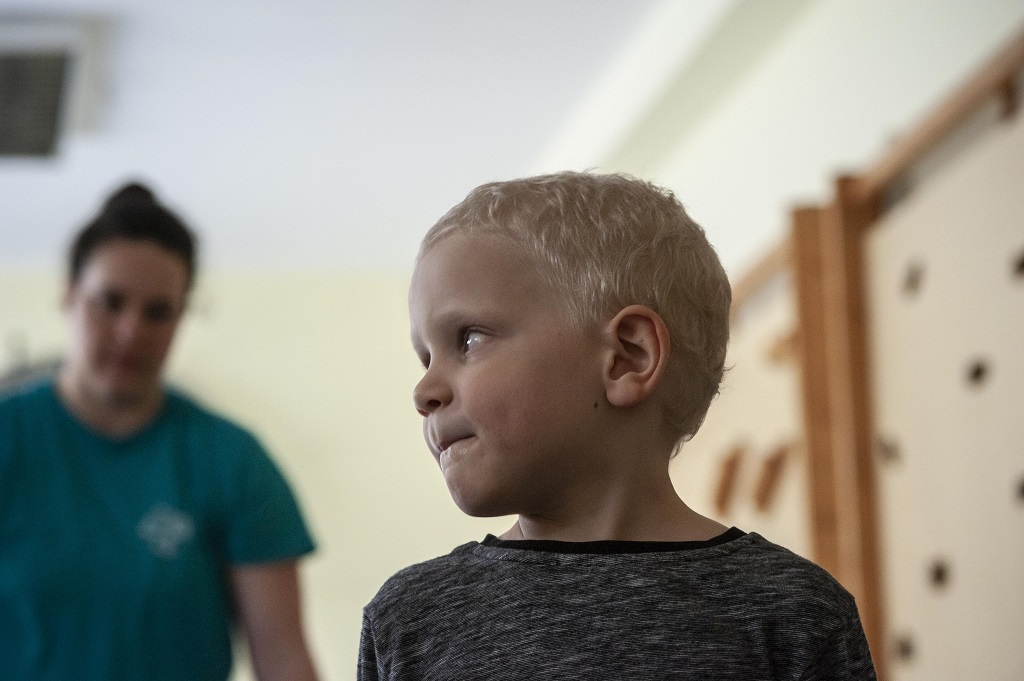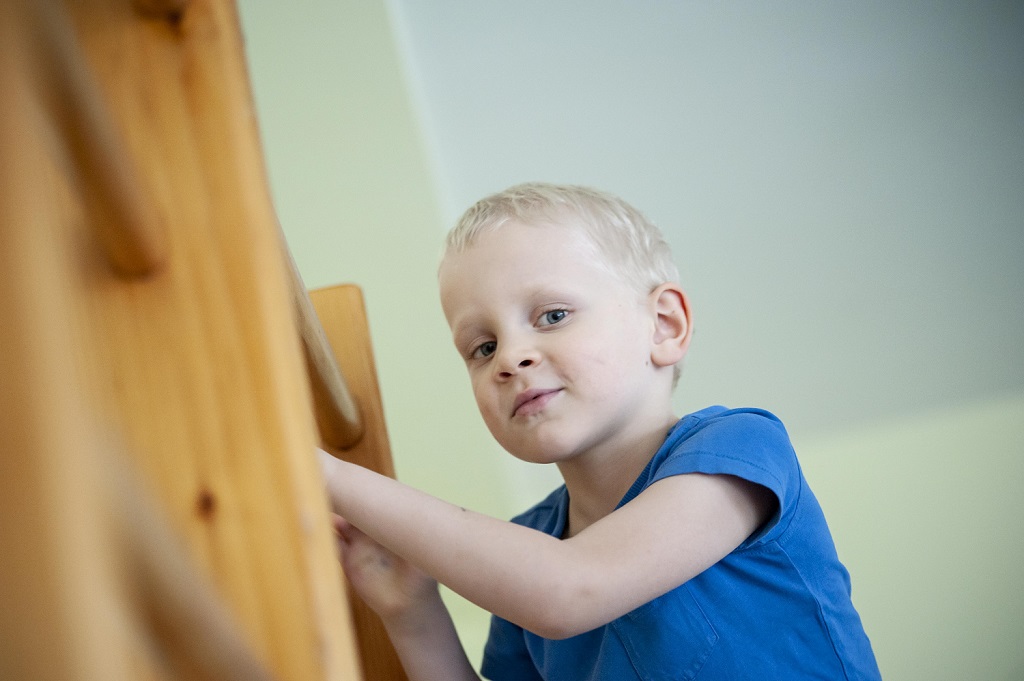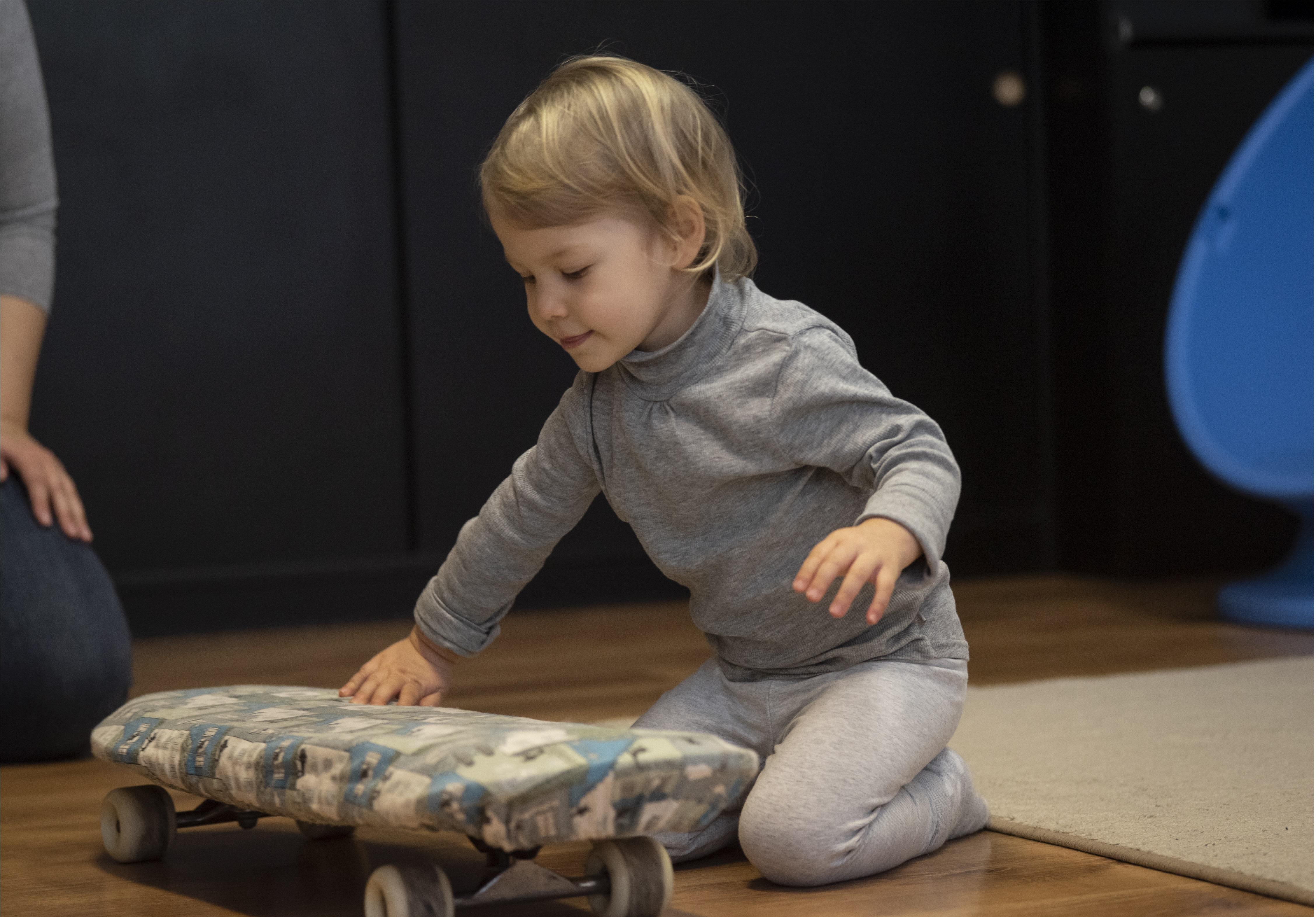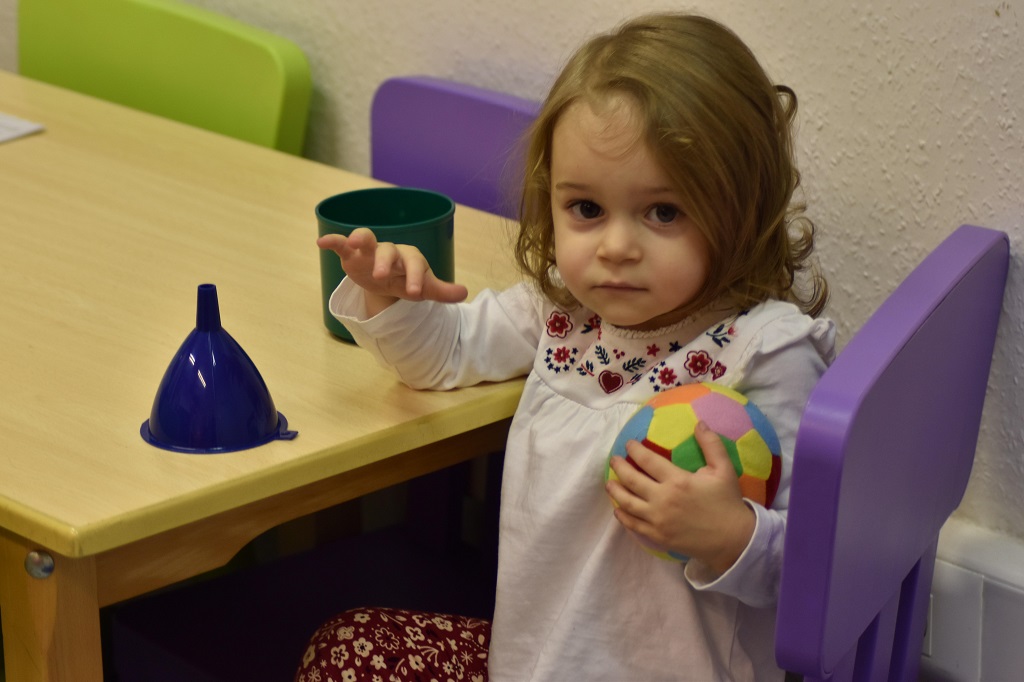
Author: Anita Madács, Special education teacher for children with intellectual disability (feeble-mindedness, oligofrenie), somatic movement educator, MA in Public Education, TSMT therapist and mentor
Instructor at TSMT-HRG College, lecturer at Pázmány Péter Catholic University, Department of Developmental and Clinical Pediatric Psychology, Institute of Psychology.
To view the mechanism of action of TSMT and HRG therapies on Sensory processing disorders, click here!

How does human body work?
Our environment transmits a huge amount of stimuli to us, and many of them are generated in our body (muscles, joints, etc.), which we perceive through our sensory organs (sensors). We perceive these stimuli through our skin, muscles, eyes, nose, balance organs, which then are processed and interpreted by our nervous system, so that we can respond to them. For instance, when our eyes are suddenly exposed to bright light, we close them immediately. When the processing is optimal, we send adequate responses, which helps us adapt to the environment. When you're cold, you wrap yourself in blankets or put on an extra sweater. Once we feel safe in our environment, there is no need to pay extra attention and to make specific effort to respond to the regular sensory challenges (sounds, lights, tastes, smells, tactile sensations, balance stimuli, etc.). Our adequate responses give us confidence, they help us learn new experiences (a self-stimulating process), and our courage grows, since we perform well.
The operation of sensory systems is the basis for the learning processes, and the complex functions of growing difficulty are based on them. Although learning at school is at the top of the sensory operation (Williams, Schellenberger - Learning Pyramid), everyday events are also influenced by those systems: in order to skilfully climb on the climbing frame, the child must be able to properly see the steps of the frame, perceive the position of his limbs for guiding them correctly to hold the frame, perceive the space around him and control their muscles precisely to take the right steps. We control all these processes based on the information obtained through our perception. A dish may look nice and still make someone feel uncomfortable and evoke unpleasant emotions by its sight or after it is tasted. While we accept and welcome the repetition of events that we experience neutral or pleasant, we try to avoid those that are unpleasant for us. What makes a feeling pleasant or uncomfortable, depends on how our nervous system processes it.

What is Sensory Processing Disorder (SPD)?
The term “sensory disorder” is an umbrella term, which may occur in connection with any of the senses, while the suboptimal operation of the processing system depends on the malfunctions of various processes: there may be difficulties with the regulation of stimuli (sensory modulation disorder); there may be a malfunction affecting the discrimination of the stimuli, (sensory discrimination disorder); and the problem may also be sensory-based in nature. (sensory-based motor problem).
If there is a disorder in the field of sensory regulation, the child will find the stimuli of normal strength too hurtful/painful/startling, will avoid or flee the stimuli (sensory avoiding); seek them deliberately (sensory seeking); or will not /barely/with delay/briefly react to a stimulus of normal strength. (undersensitive).
The difficulties of sensory discrimination can also affect any of the sensory organs, e.g. the skin senses only one of several stimuli at the same time, may not be able to distinguish between stimuli of different qualities, may have difficulty recognizing differences between the letters that make up words, possibly, the differences between sounds, has difficulty with distinguishing between visual details, feels lost in the crowd, etc.
One type of the Sensory-based Motor Disorders is Postural Disorder and another is clumsiness (Dyspraxia). The former, for instance, is manifested in the deviation of muscle tone, in difficulty of using the right and left sides simultaneously and the improper functioning of the balance, while the latter is manifested in poor motor coordination, difficulties in tasks requiring dexterity and possible articulation problems. (problems with forming speech sounds).

Why Sensory Processing disorder is a problem?
The dysfunctional operation requires a lot of extra energy, which can lead to shorter attention spans and shorter involvement in the tasks, and tense or aggressive behaviour.If the people around the child do not recognize the problem, they can misunderstand his behaviour: it seems he is misbehaving, although he is just reacting to the reality as he is experiencing it.Mishandled situations can also cause secondary mental injury; resulting in processes affecting the child’s emotional life, besides dysfunction of social sills, withdrawal, anxiety, marginalization, and possibly extreme behaviour patterns may occur as a result of reactions of the child’s physical environment. Parents may blame themselves that the child’s condition was caused by their bad parenting, although the underlying problem is a neurological dysfunction. (This does not mean that bad parenting won’t add to the dysfunction, but in the first place, it is necessary to normalize the functional quality of the neurological processes, because this will improve the child’s behaviour and help the caregiver in influencing him).
The phenomenon is a message to the child’s environment, a symptom that should not be ignored. In this case adequate help should be given and it should be understood that the person involved behaves in challenging ways because he is unable to behave otherwise, not because he wants to! We need to see behind the surface, as children are not able to overcome the problem by themselves.
What can be the underlying cause of sensory processing issues?
There are various factors that can influence the development of our perception, these include:
It is important to know that sensory processing disorders occur not due to sensory organ malfunctions (e.g. near-sightedness (myopia) or far-sightedness (hyperopia) or hearing loss)! If there is a suspicion of a sensory problem disorder, the screening process should be started by a specialist examination of the relevant sensory organ. A well-organized, successful adulthood requires a well-functioning nervous system which is able to transmit the stimuli of the environment and process them properly (monitors, sorts out and arranges them in order), giving the right responses to them.

How can TSMT and HRG help?
The sensory processing disorder can be influenced and improved with special therapies that promote the mature functioning of the nervous system. The earlier we start the effective developmental therapy, the faster a positive improvement can be achieved. Among others, TSMT, HRG and DSIT methods can serve as effective help.
In the TSMT (Targeted Sensorymotor Trainings) the sensory experiences gained on dry land promote the normalization of the neurological processes, which helps produce the adequate responses to the different external and internal phenomena, events and sensations. (help in achieving accurate perception, good motor and language skills, developing a realistic body experience and neural body map, spatial orientation, self-regulation, etc.); in the HRG-method (Hydrotherapeutic Rehabilitation Gymnastics), water as a medium with specific physical features ensures to have a simultaneous experience of the exterior and interior environment.In addition to professionals, it is very important that parents who raise children with developmental delay are aware of the characteristics of the problem so that they can understand the reactions of younger and older children and can support and encourage them.
If you want to know whether your child has any sensory processing disorder, please complete the Sensory Processing Disorder Questionnaire!
References:
· C.S. Kranowitz: The troubled child. Studio Nagy Bt., Dunakeszi, 2012.